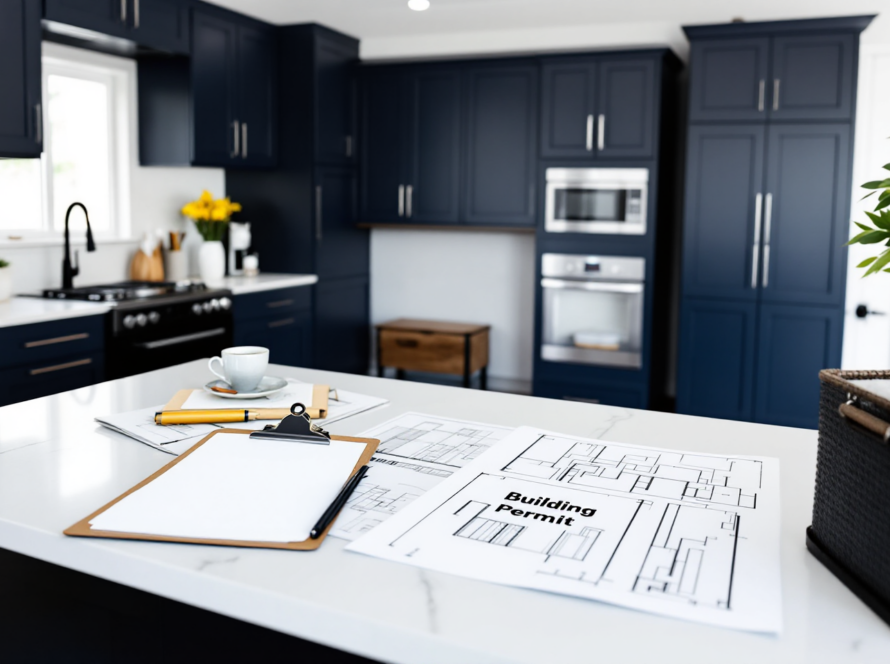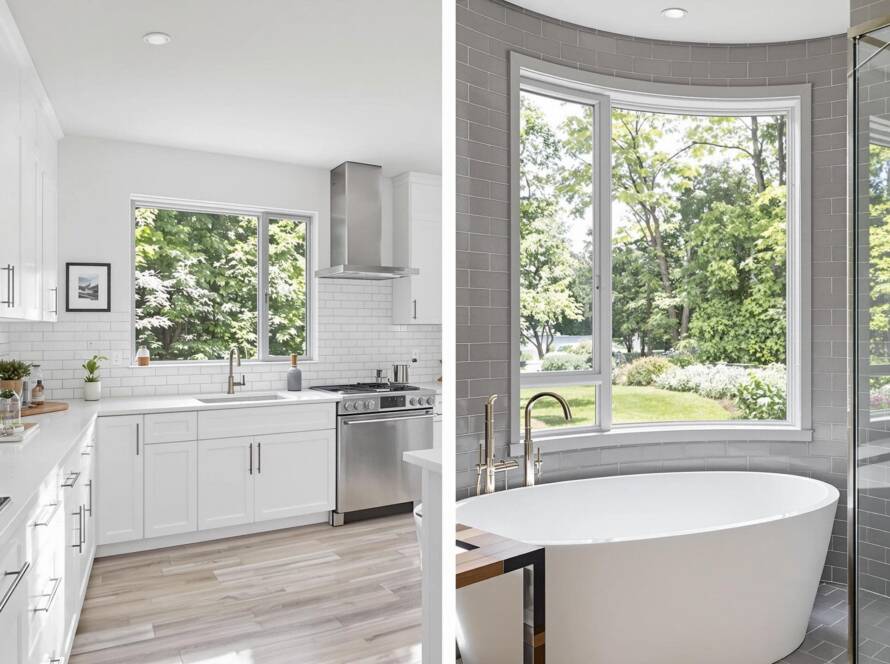For pet owners, the kitchen isn’t just a hub for cooking—it’s a hotspot for furry foot traffic, snack begging, and the occasional “oops” moment. Designing a pet-friendly kitchen doesn’t mean sacrificing style or function. It means smart planning, durable materials, and a few clever additions to make life easier for both you and your four-legged family members.
From hidden feeding stations to paw-proof floors, today’s kitchen designs are evolving to meet the needs of modern pet households. Whether you’re starting from scratch or making a few upgrades, these ideas will help you create a kitchen that’s stylish, safe, and built for wagging tails.
TLDR – Quick Guide
- Durable, easy-to-clean surfaces are essential.
- Built-in feeding stations keep bowls out of the way.
- Pet-safe storage prevents accidental snacking disasters.
- Slip-resistant flooring protects paws and prevents spills.
- Designated pet zones add order and reduce kitchen chaos.
Implementation Tactics
1. Choose Pet-Resistant Materials
Claws, fur, and drool are no match for quartz countertops and tile or luxury vinyl plank (LVP) floors. These materials are not only stylish but also scratch-resistant, non-porous, and easy to clean—ideal for keeping your kitchen hygienic and pet-proof.
Avoid: Hardwood floors (prone to scratches), carpeted rugs (trap pet hair), and marble (stains easily from pet messes).
2. Install a Built-In Feeding Station
No more tripping over bowls! Incorporate a drawer-style pet feeding station in the lower cabinets or island base. It keeps bowls tucked away when not in use and can include space for dry food storage right above.
Pro tip: Add a water line hookup to create an automatic refill station.
3. Prioritize Pet-Safe Storage
Chocolate, onions, and cleaning supplies? Dangerous for pets. Use child-proof latches or dedicated pet-proof cabinets for storing toxic items. Pull-out pantry drawers or hidden garbage bins are also great for keeping temptation out of paws’ reach.
4. Create a Pet Lounge Area
Designate a cozy corner with a bed or crate where your pet can chill while you cook. Some homeowners even integrate pet nooks under kitchen benches or custom-built cubbies into cabinetry.
It keeps pets out from underfoot and gives them their own little domain.
5. Add Easy Access and Clean-Up Features
- A pet wash station or utility sink near the kitchen is great for muddy paws.
- Install low hooks for hanging leashes, bags, or collars.
- Use machine-washable mats and robot vacuums to stay ahead of fur tumbleweeds.
Bonus: Motion-sensor lights or toe-kick drawers can double as treat drawers—your pup will thank you.
Key Takeaways
- Durable, easy-clean materials like quartz and LVP make a big difference in a pet-friendly kitchen.
- Built-in feeding stations and lounge areas keep the space tidy and your pet happy.
- Pet-proofing your storage ensures safety without sacrificing convenience.
- Adding features like pet sinks, washable mats, and storage hooks blends functionality with flair.
FAQs
1. What flooring is best for a pet-friendly kitchen?
Luxury vinyl plank (LVP) and tile are top choices—they’re water-resistant, scratch-resistant, and easy to clean, making them ideal for pets.
2. Can I have a stylish kitchen and still make it pet-friendly?
Absolutely. Modern materials and custom cabinetry let you blend pet-friendly features seamlessly into any aesthetic, from farmhouse to minimalist.
3. How do I keep pet hair under control in the kitchen?
Regular sweeping or using a robot vacuum helps. Also, opt for low-shed breeds, washable rugs, and avoid fabrics that trap fur.
4. Is a pet feeding station worth it?
Yes! Built-in feeding stations help keep bowls organized and out of traffic zones, and they can even integrate food storage or auto-water systems.
5. What kitchen hazards should I look out for with pets?
Common dangers include toxic foods (like chocolate or grapes), open trash bins, cleaning chemicals, and small items that could be swallowed. Secure storage is key.



